Pancho Villa State Park, Columbus NM
I like this park and the short walk into town for a green chili cheeseburger at the Patio Cafe. Of late I’ve been alternating between here and City of Rocks State Park about 60 miles to the north from late winter until the weather warms enough to head to the Four Corners area for my annual canyon country fix.
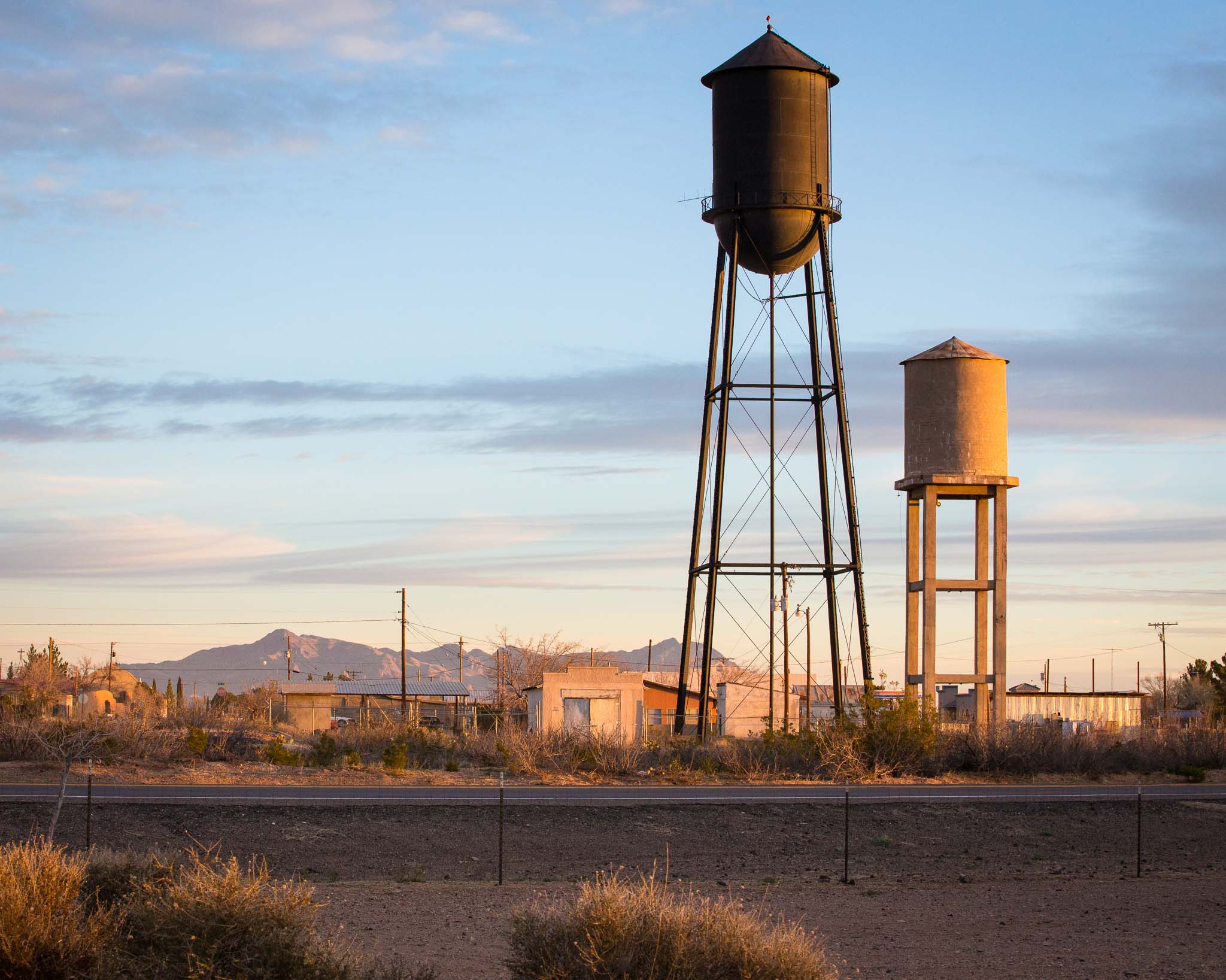
Sunrise {more...}
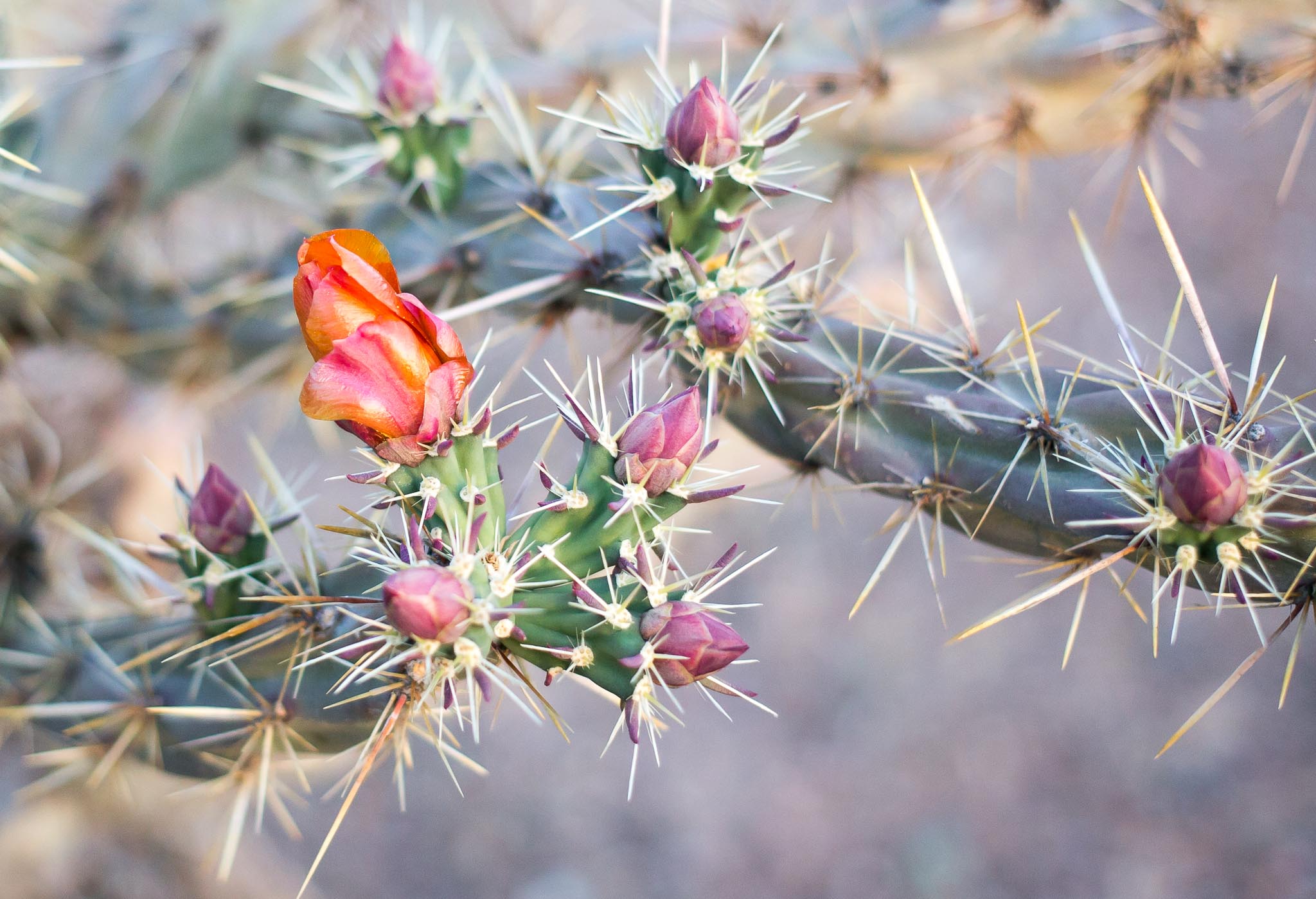
Desert Spring {more...}
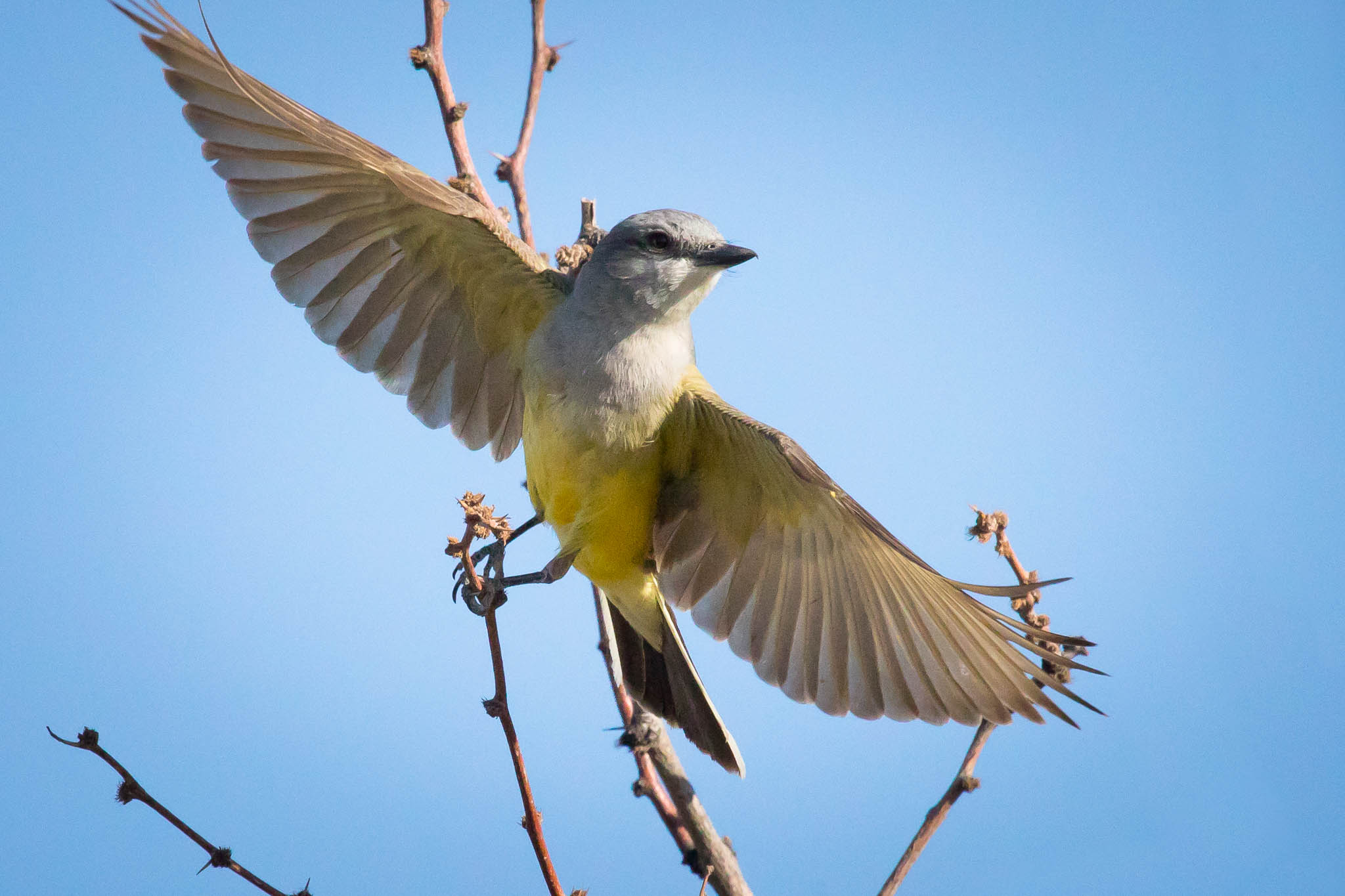
Taking Flight {more...}
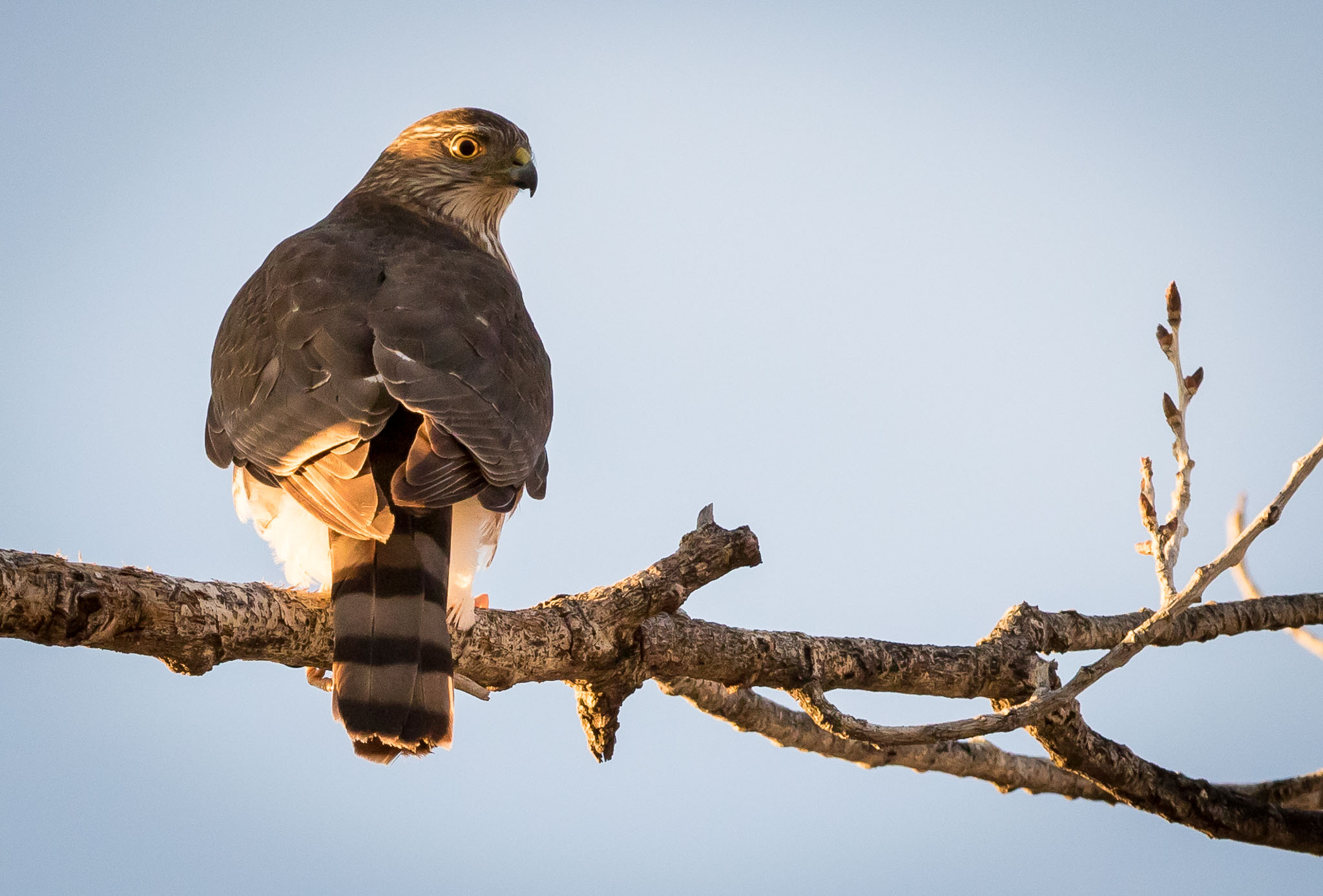
Sharp-shinned Hawk {more...}
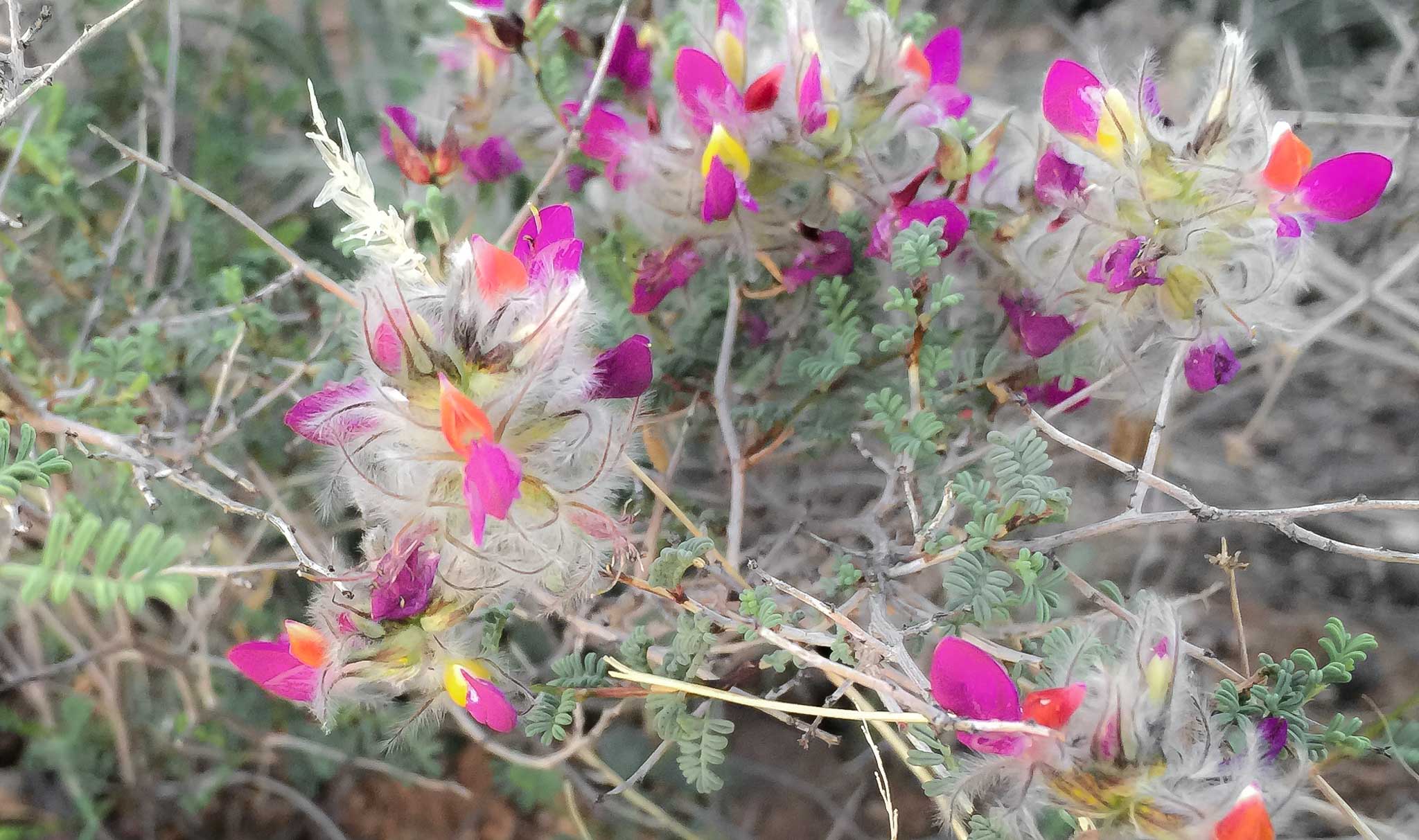
Feather Dalea {more...}
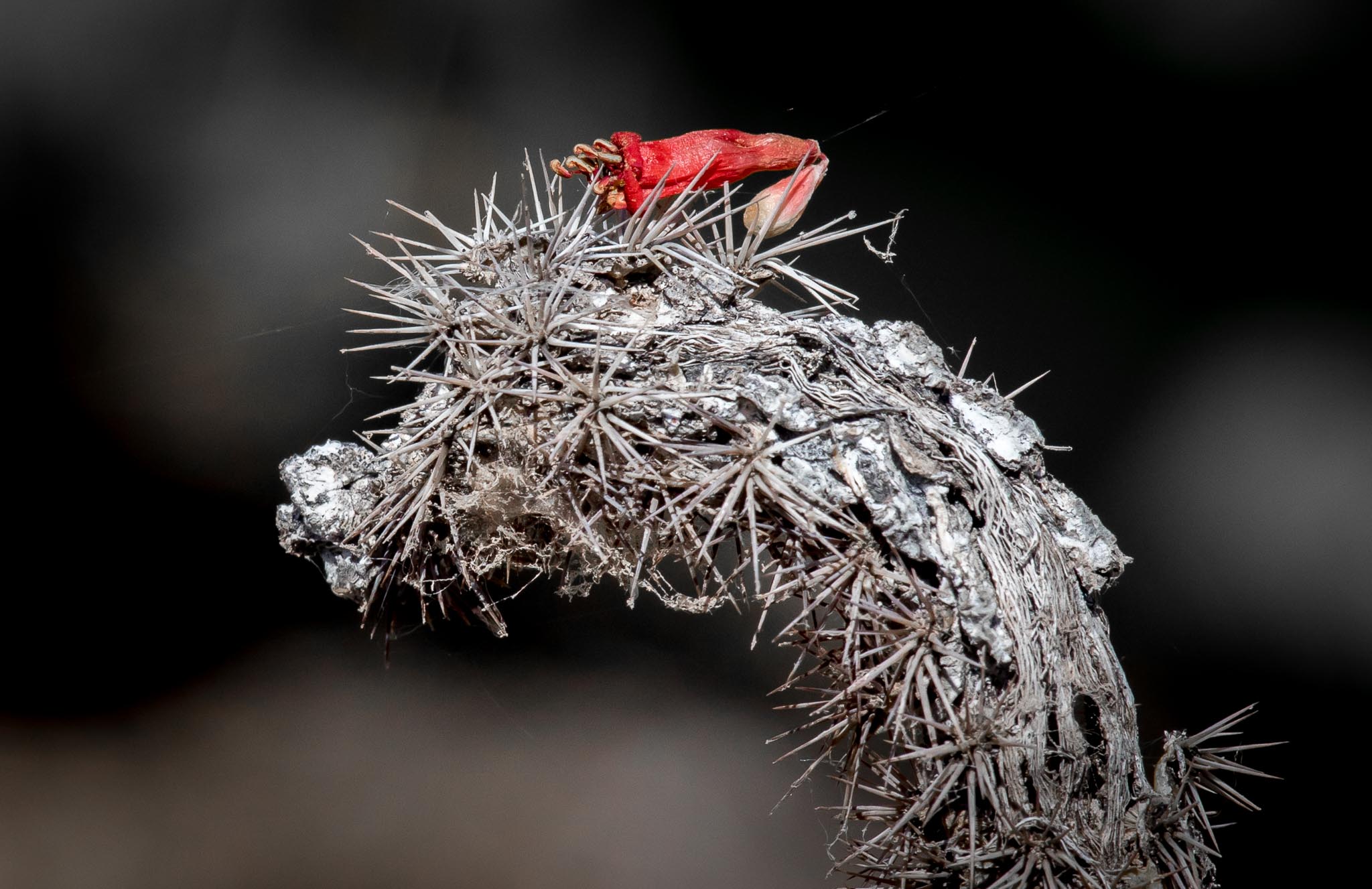
Indignity {more...}
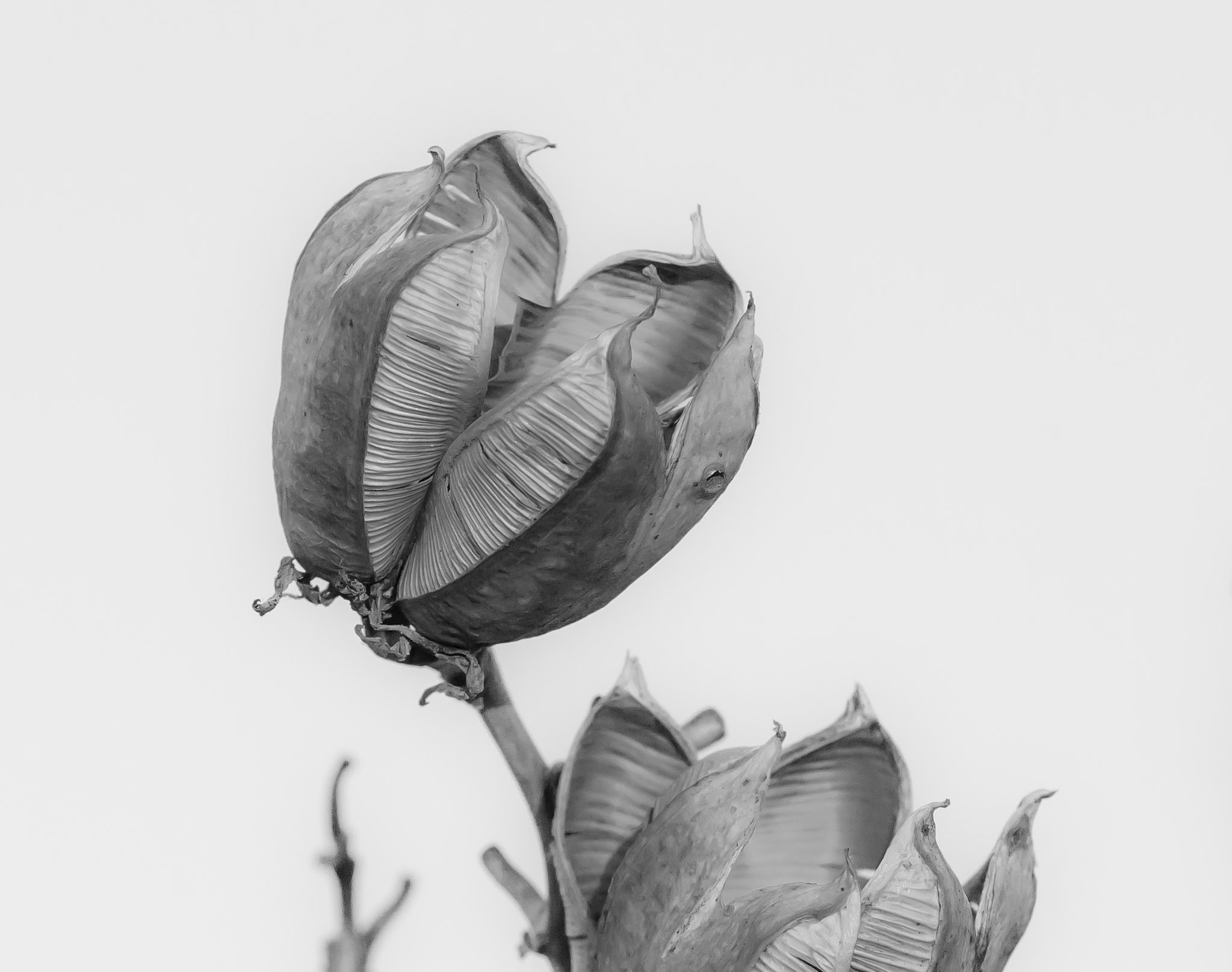
Mission Accomplished {more...}
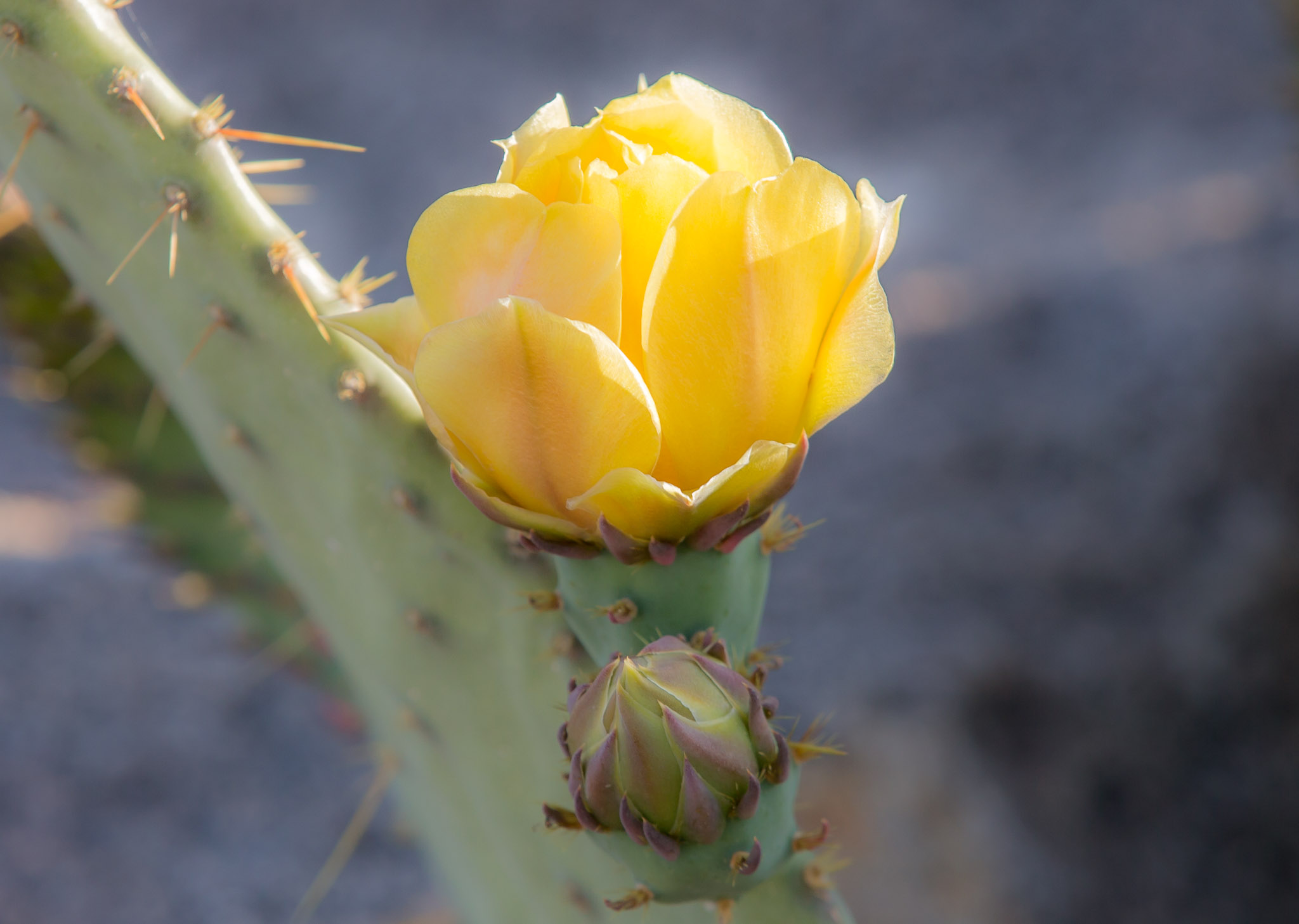
Bloomin' Ready {more...}
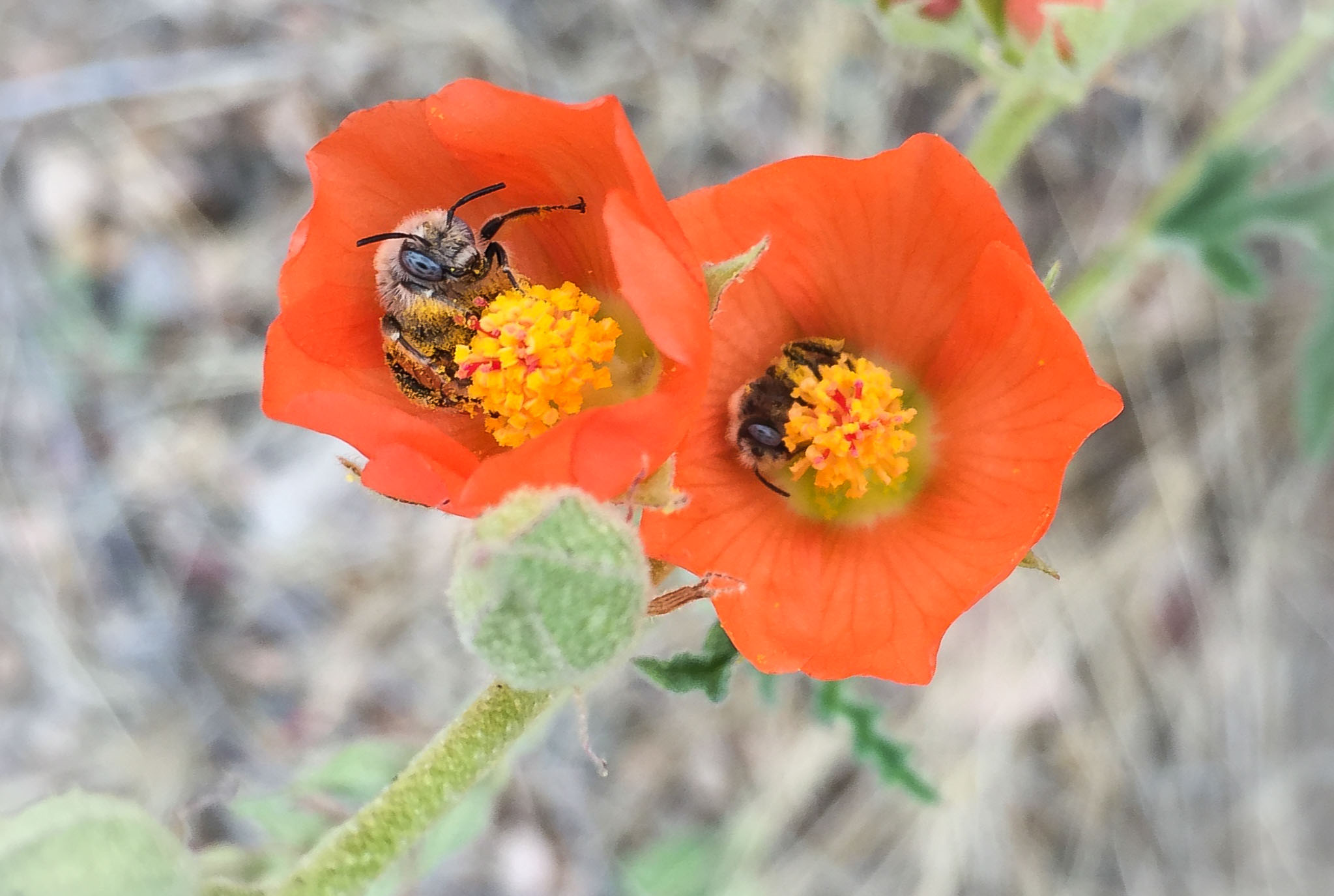
Globemallow Pollen {more...}

Yucca {more...}
Owls at Pancho Villa State Park
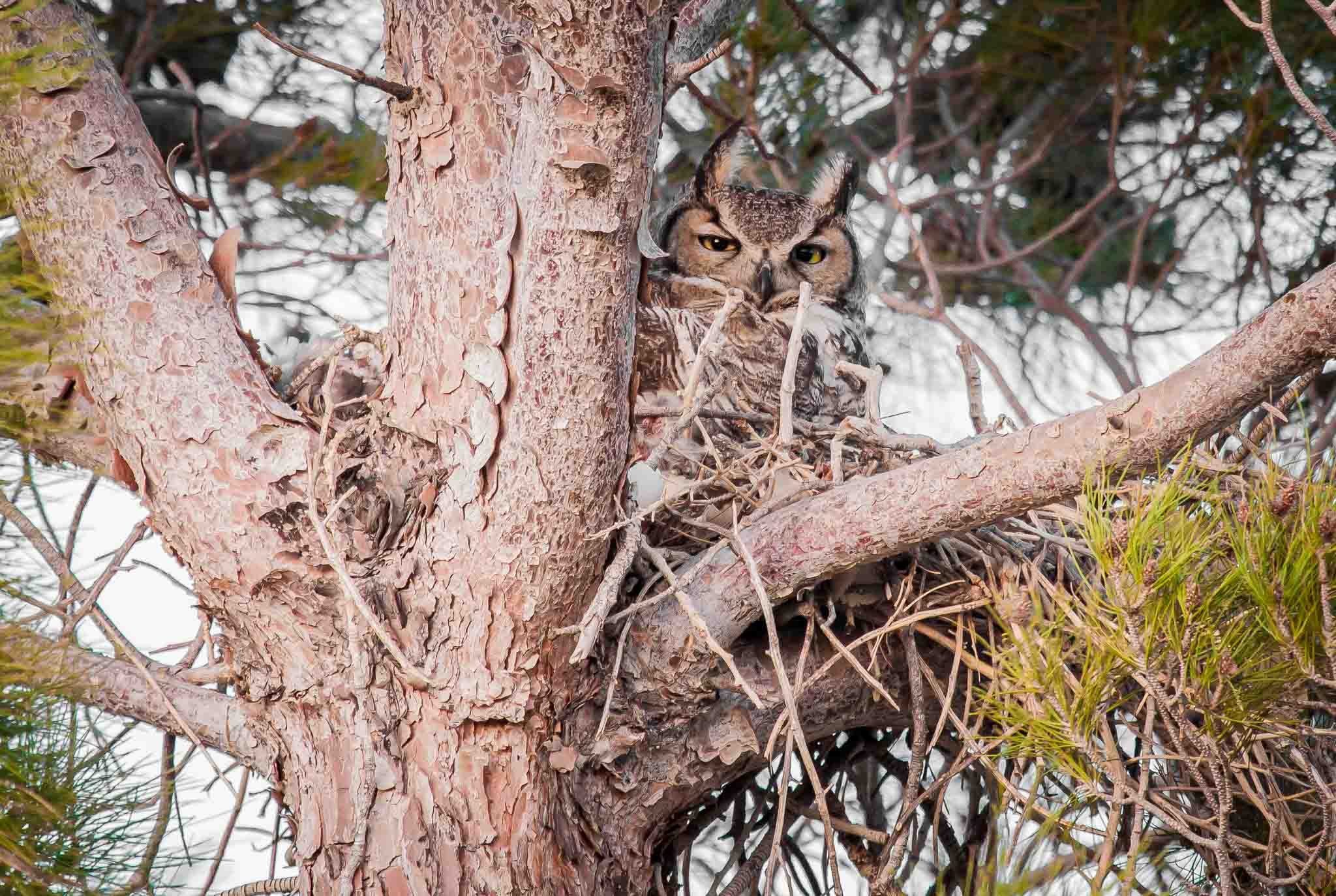
A New Beginning
Great Horned Owl on the Nest at Pancho Villa State Park, Columbus NM
March 29, 2013
A pair of Great Horned Owls have been roosting and nesting at Pancho Villa State Park in Columbus NM the past few years and have given visitors an opportunity to photograph them going about their daily lives. What a hoot it has been!
Go to my Great Horned Owls Collection to see my images of some of them.
Addenda to Photos
Sunrise
Columbus NM
February 20, 2015
I took this picture from the Visitor Center at Pancho Villa State Park.
Desert Spring
Cholla, Pancho Villa State Park, Columbus NM
April 22, 2016
The wildflowers on Coot's Hill in the park can be quite beautful. Go to my Wildflowers Collection to see my images of some of them.
Taking Flight
Western Kingbird, Pancho Villa State Park, Columbus NM
April 20, 2017
A bug! Grab it! ...
Western Kingbird
The Western Kingbird is very similar to and easily confused with Cassin's kingbird, Couch's kingbird and the tropical kingbird, all of which overlap the western kingbird's range to some extent. The western, however, is generally lighter in coloration and can be distinguished from these species by the black squared tail with white outer webs, as well as voice.
Their breeding habitat is open areas in western North America. The increase in trees throughout the Great Plains during the past century due to fire suppression and tree planting facilitated the range expansion of the western kingbird as well as range expansions of many other species of birds. Kingbirds make a sturdy cup nest in a tree or shrub, sometimes on top of a pole or other man-made structure. Three to five eggs are laid and incubated for 12 to 14 days.
The name kingbird is derived from their "take-charge" behaviour. These birds aggressively defend their territory, even against much larger birds such as hawks.
These birds migrate in flocks to Florida and the Pacific coast of southern Mexico and Central America.
They wait on an open perch and fly out to catch insects in flight, sometimes hovering and then dropping to catch food on the ground. They also eat berries.
The song is a squeaky chatter, sometimes compared to a squeaky toy. The call is a sharp loud whit. It occasionally sings before sunrise.
Wikipedia / Western Kingbird
Sharp-shinned Hawk
Pancho Villa State Park, Columbus NM
February 26, 2015
This guy was intent on flushing a Great Horned Owl from its day roost in a nearby pine. It's diving passes at the owl didn't work and it soon gave up.
Feather Dalea
Pancho Villa State Park, Columbus NM
March 29, 2015
To my surprise a quick search didn't turn up this wildflower. These small flowers are on numerous small shrubs on Cootes Hill here at Pancho Villa State Park. To give a sense of scale, the purple petals are about 1/4 inch long and the roundish, fairly dense, shrubs are about a foot tall. I'll keep looking but if anyone knows what they are I'd appreciate a heads-up.
Evelyn knows her Dalea Formosa.
Thanks Evelyn!
Feather Dalea - Dalea Formosa
Common English Names: Feather Dalea, Feather Plume, Pea Bush, Plume Dalea
Common Spanish Names: Yerba De Alonso García
Scientific Name: Dalea formosa (DAY-lee-uh for-MOW-suh)
Family: Fabaceae-Papilionoideae (Pea Family)
Geographic Range: Central, Panhandle, and western Texas; Oklahoma Panhandle; southern Colorado; southern Utah; through New Mexico, Arizona, Sonora, Chihuahua, and Coahuila, Mexico.
Plant Form: Semi-evergreen shrub, 3 x 3'.
Remarks: Low mounding shrub with divergent branching woody stems, tiny light green compound leaflets and small, bright violet flowers with yellow throats in 1" clusters. From March to September, small pea-like flowers display prominently plumose calyces and produce seeds that also have plumed tails that give a distinctive fuzzy/feathery appearance intermittently from March through September.
From: Chihuahuan Desert Plants, The University of Texas at El Paso:
Indignity
Cholla Skeleton with Ocotillo Blossom, Pancho Villa State Park, Columbus NM
April 21, 2017
What do you see? I see a mythical figure with wild hair. Check out my Pareidolia Collection for some more examples.
Mission Accomplished
Desiccated Yucca Seed Pod, Pancho Villa State Park, Columbus NM
March 12, 2016
The Yuccas at Pancho Villa State Park were in full bloom by the end of March last year. I see no new growth on them yet this year. Can they possibly bloom in the next two weeks? Spring growth in the Southwest can be dramatically fast but so much in the next two weeks seems a bit of a stretch. We shall see.
Bloomin' Ready
Cow's Tongue Prickly Pear, Pancho Villa State Park, Columbus NM
April 27, 2016
This image was taken just after sunrise and this blossom was not fully open yet. They don't fully open until a couple of hours after sunrise, and then only last one day.
Cow's Tongue Prickly Pear
Opuntia engelmannii is a prickly pear common across the south-central and Southwestern United States and northern Mexico. It goes by a variety of common names, including "cow's tongue cactus", "cow tongue prickly pear", "desert prickly pear", "discus prickly pear", "Engelmann's prickly pear", and "Texas prickly pear" in the US, and "nopal", "abrojo", "joconostle", and "vela de coyote" in Mexico.
The nomenclatural history of this species is somewhat complicated due to the varieties, as well as its habit of hybridizing with Opuntia phaeacantha.
The Opuntia engelmannii range extends from California to Louisiana in the United States, and from Sonora (state) to the Tamaulipan matorral in Chihuahua (state), in Mexico.
In the Sonoran Desert, terminal pads face predominantly east-west, so as to maximize the absorption of solar radiation during summer rains. Although found occasionally in the Mojave Desert, it tends to be replaced by Opuntia basilaris, which does not need the summer rain.
The overall form of Opuntia engelmannii is generally shrubby, with dense clumps up to 3.5 metres (11 ft) high, usually with no apparent trunk. The pads are green (rarely blue-green), obovate to round, about 15–30 cm long and 12–20 cm wide.
The glochids are yellow initially, then brown with age. Spines are extremely variable, with anywhere from 1-8 per areole, and often absent from lower areoles; they are yellow to white, slightly flattened, and 1–6 cm long.
The flowers are yellow, occasionally reddish, 5–8 cm in diameter and about as long. Flowering is in April and May, with each bloom lasting only one day, opening at about 8AM and closing 8 hours later. Pollinators include solitary bees, such as the Antophoridae, and sap beetles.
The purple fleshy fruits are 3–7 cm long.
Wikipedia.
Globemallow Pollen
Pancho Villa State Park, Columbus NM
March 29, 2015
Emory's Globemallow
At least I think that's what it is. There are a couple of other globemallows that are similar. Here's a description of it: {link}. I have no idea what the bees are.
Yucca
Pancho Villa State Park, Columbus NM
March 27, 2015
Yucca Uses
Yuccas are widely grown as ornamental plants in gardens. Many species also bear edible parts, including fruits, seeds, flowers, flowering stems,[13] and (more rarely) roots. References to yucca root as food often arise from confusion with the similarly pronounced, but botanically unrelated, yuca, also called cassava or manioc (Manihot esculenta). Roots of soaptree yucca (Yucca elata) are high in saponins and are used as a shampoo in Native American rituals. Dried yucca leaves and trunk fibers have a low ignition temperature, making the plant desirable for use in starting fires via friction. The stem (when dried) that sports the flowers is often used in conjunction with a sturdy piece of cedar for fire-making.[14] In rural Appalachian areas, species such as Yucca filamentosa are referred to as "meat hangers". With their sharp-spined tips, the tough, fibrous leaves were used to puncture meat and knotted to form a loop with which to hang meat for salt curing or in smokehouses. The fibers can be used to make domestic items[15] or for manufacturing cordage,[16] be it sewing-thread or rope.[citation needed] Yucca extract is also used as a foaming agent in some beverages such as root beer and soda.[17][18] Yucca powder and sap are derived from the logs of the plant; such extracts can be produced by mechanical squeezing and subsequent evaporation of the sap, and are widely used in food, cosmetics, and pharmaceuticals [19]
Gastronomy
The flower petals are commonly eaten in Central America, but the plant's reproductive organs (the anthers and ovaries) are first removed because of their bitterness.[20] The petals are blanched for 5 minutes, and then cooked a la mexicana (with tomato, onion, chili) or in tortitas con salsa (egg-battered patties with green or red sauce). In Guatemala, they are boiled and eaten with lemon juice.[20]
In El Salvador, the tender tips of stems are eaten and known locally as cogollo de izote.[20]
Wikipedia / Yucca
